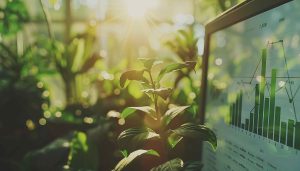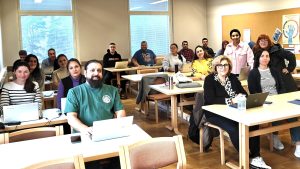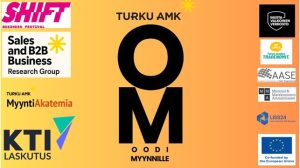-Haluan työskentelemään. En halua vastaanottaa toimeentulotukea Suomesta valtiolta. Näin kommentoi ulkomaalaistaustainen sosionomiopiskelija Omer, kun kysytään suunnitelmia valmistumisen jälkeen. Mediasta…
Tekijät | Authors
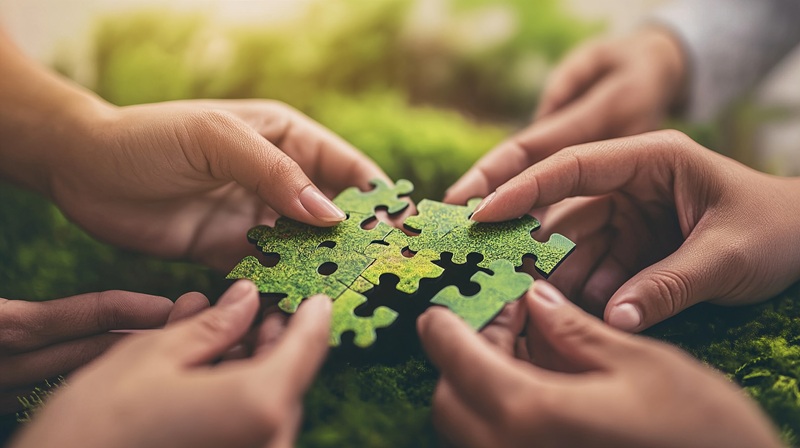
Circular Business Practices: More profit with less material usage
Finland is renowned for its nature loving population, being the happiest country in the world has been attributed to a close relationship with nature. Spending time in nature is commonly seen as having positive effects on one’s mental health and what is not more symptomatic of the Finnish summer than spending time under the never-setting sun?
Despite the nature-loving folk Finns are, the country is doing poorly at the rate that materials are re-circulated into the economy. The circular material use rate, CMUR for short, is monitored by the European Union and provides a basis to compare the members states. Finland is one of the lowest ranked countries on the index (Eurostat, 2023). With merely 2.3 % CMUR in 2023, compared to Sweden’s 12.1 %, Finland is not currently doing particularly well with material circulation in comparison.
One reason for this is the large timber, paper, and mining industry and the winter durability requirements of our road and rail infrastructures. These industries account for a significant portion of the Finnish material use, and the materials are, obviously, not retrieved back into circulation. But Finland is also a large exporter of unrefined products which accounts for the low CMUR rates and is visible in the low ranking of Finland’s resource productivity, which measures the financial gains of material use. Finland ranks fifth lowest of the member states in this metric (Eurostat, 2024).
Currently the globally extracted raw-materials for production are about four times larger than the materials circulated (Bianchi & Cordella, 2023). Circular practices today mostly revolve around recycling but this is insufficient to counter our consumption of virgin material and we need other ways to decrease our material use (Bocken, 2024).
The green transition in Finland
A significant amount of “green” investments are planned in Finland. A recent report by Gaia (2024), commissioned by the confederation of Finnish Industries, indicates that investments in the green economy could accumulate 16 billion euros to the Finnish economy during the next 30 years. The report states that there are approximately 279 billion euros worth of planned green investments of which about 200 billion are related to wind power. Hydrogen and battery technologies are a large investment category with 15,5 and 7,9 billion euros respectively.
Green investments, however, do not solve the high use of raw materials, it is necessary to decrease their environmental impact. Green investments require material use and create an even stronger need to understand how materials and products could be designed to be recyclable, reusable, or remanufacturable. For example, the blades of wind turbines are difficult to recycle and there are few cases of reuse for them. Battery recycling is very much in its infancy and the production of batteries has significant environmental impacts. The need to develop circular business practices continues to be significant despite new greener sources of energy or energy storage.
Requirements to circulate material and products
Circulating the material used in the production of new, and old, technologies create business opportunities to forerunners in material reuse. This requires new business models, product designs, and longer product lifecycles that allow for capturing value multiple times from the same raw material, whether it is infrastructure, machines, textiles, or furniture.
Several countries have strategies for promoting the circular economy, not least China and Japan. The European Union is also working actively to promote circular business practices in Europe not least with the Ecodesign for Sustainable Products Regulation (ESPR) that entered into force 18 July 2024.
The ESPR is a regulation that aims at minimizing waste by requiring products sold on the European market to have certain specifications that make the products easier to reuse, repair, and remanufacture (see table 1.).
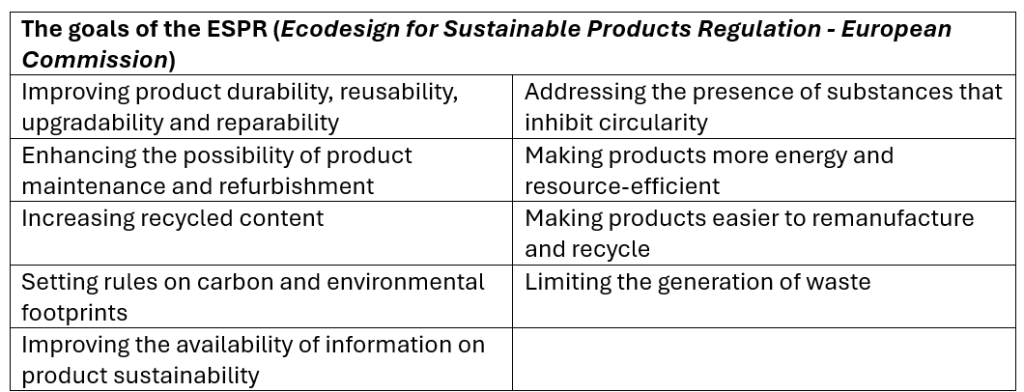
Table 1. the goals of the ESPR (Ecodesign for Sustainable Products Regulation – European Commission).
Environmental regulations can have a significant impact on business operations. Consider the requirement of repairability. In case of electronics, it requires new ways of manufacturing and designing products. The ESPR is, in other words, targeting the accumulation of waste upstream in the value chain but this requires an understanding of the regulation, identifying how it affects business, and how to manage potential operational changes required to conform with the regulation.
Our approach to support circularity in SMEs
In the Business Finland funded research project SuFiRe (4/2025-3/2027) we are building a road map for SMEs to adopt to the new regulation and promote a circular economy. This involves mapping the potential business opportunities within the frame of the ESPR, analyzing the content of the ESPR in relation to business operations, and designing change management methods for increasing personnel’s buy-in to “greener” practices.
Analyzing the content of ESPR
The ESPR sets new requirements on products sold on the European market. Åbo Akademi team’s, Professor Tynkkynen and PhD Candidate Lahtinen, approach to unravelling the impact of the ESPR on business is to combine an analysis of the regulation with interviews with public and private stakeholders. This includes interviews with the implementing public authority, the Finnish Energy Authority, and with the companies participating in the project.
Business opportunities within the ESPR
Crucial to moving towards circular business practices is to identify viable business opportunities and integrating those with current business practices. Turku UAS’s research group Circular Business Models is tackling this issue by developing a series of workshops to tease out profitable circular business practices. By involving cross-functional groups, the workshops will create a context for idea exchange across traditional organizational silos, including design, production, and HSE.
Values-based change management
What we prefer and avoid doing can be traced to what we cherish, our values. Values are often described as the lenses through which we observe the world around us. These characteristics of values make them and important element to consider when implementing change in organizations (Burnes & Jackson, 2011; Långstedt & Manninen, 2020).
In SuFiRe, the entrepreneurship and value creation research group is looking to identify first what values are prominent among the personnel in our case companies and then find the arguments and methods to commit the personnel to circular practices and strategies and measure their impact on attitudes to circular practices. With this we should be able to identify efficient ways of engaging personnel in circular practices.
For more information about the project, please contact:
consortium leader Johnny Långstedt at johnny.langstedt@turkuamk.fi
Artikkeli on osa Yrittäjyys ja arvonluonti -tutkimusryhmän julkaisuja.



